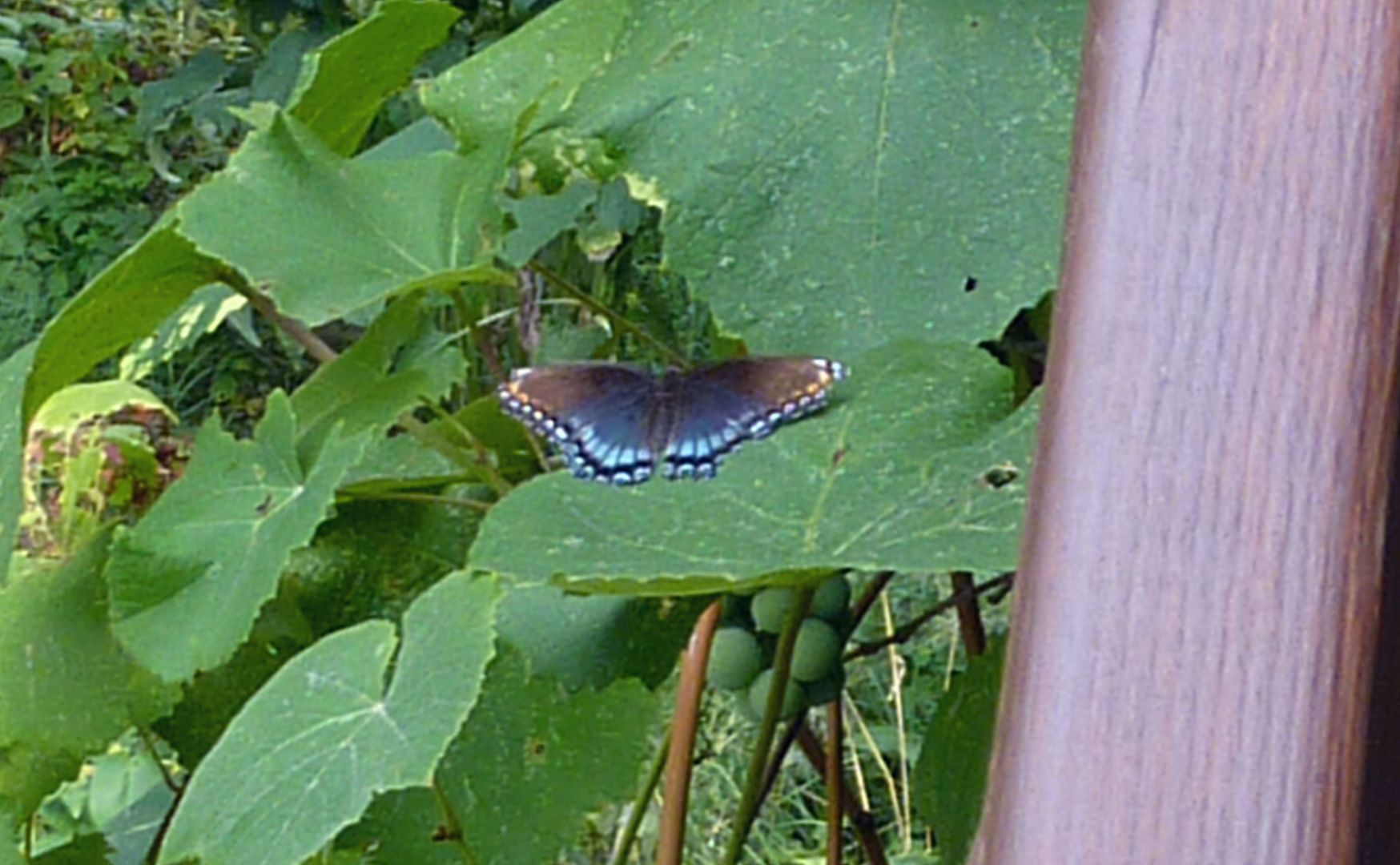Eastern Tiger Swallowtail, Papilio glaucus. This is probably the biggest butterfly we get here. It uses the Wild Black Cherry, Tulip Tree, and Native Magnolias as host plants. I most frequently see them on the Wild Black Cherry that grows behind our hours in a small fragmented woodland no one takes responsibility for. This wooded area doesn't actually touch my property which has always held me back from trying to find caterpillars. I do have some native plum trees which are in the same genus but so far there aren't any nibbles.
The Red-spotted Purple, Limenitis arthemis.
I find this to be one of the easiest butterflies to approach without spooking. They do eventually fly away but it's nothing compared to some of the other species. There are a number of color forms with the most drastic being a bold white stripe in place of the blue and orange, which changes the common name to White Admiral instead of Red-spotted Purple. When not in that form though, the adult of this species can be distinguished from the following: The band of light blue along the rear wings. The orange spots on the front wings and shading that may be hard to see in some lighting. Also there are even more orange blue and white spots under the wings.
This species shares the Wild Cherry as a host plant with the Tiger Swallowtail. Willow and Birch are other host plants. This is a butterfly that really goes for rotting fruit and tree sap, over flowers. They like sipping at mud puddles and collecting salt from sandy clearings. Generally you'll find them hanging out around the fruiting plants or damaged trees near their host plants.



